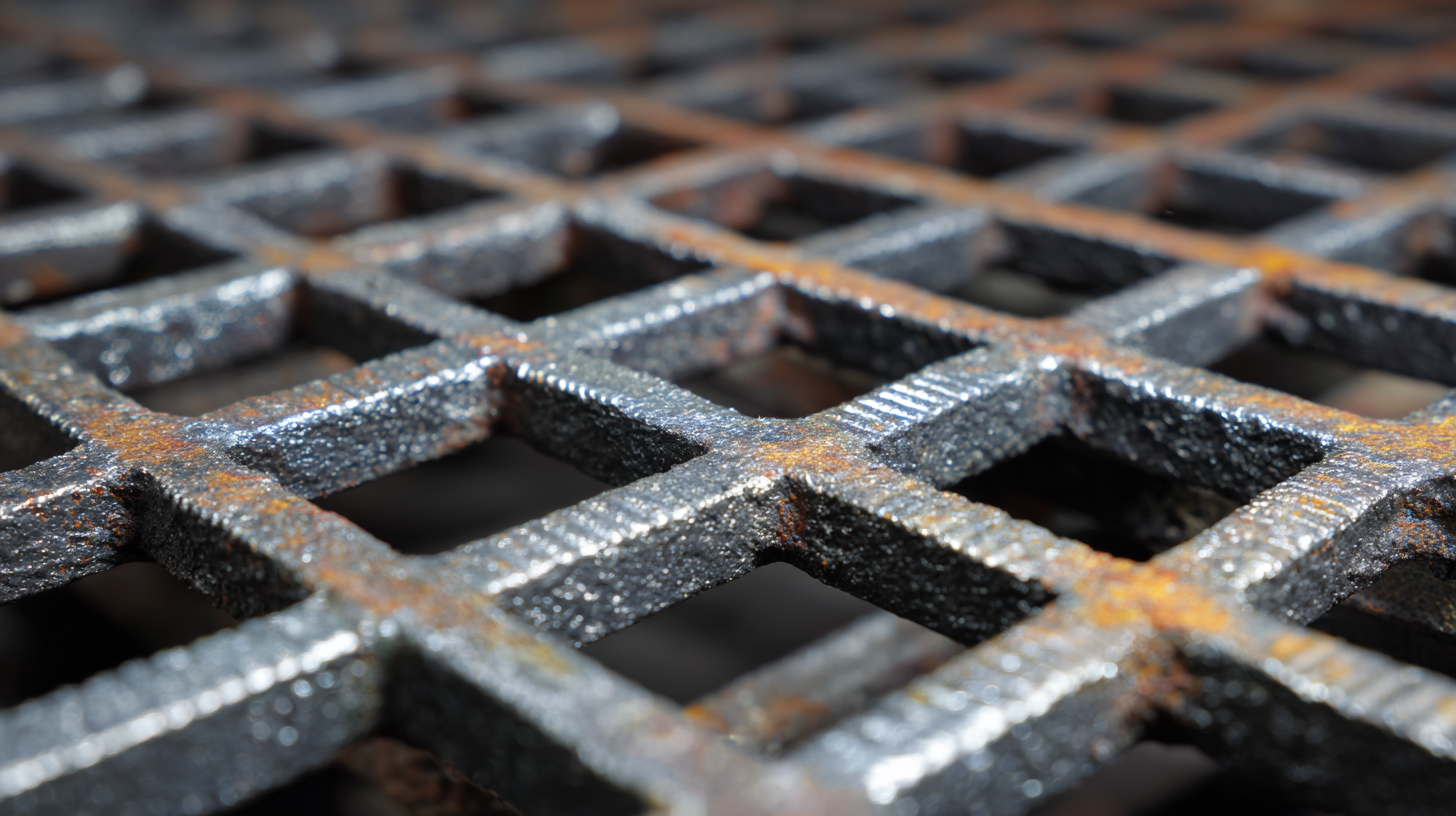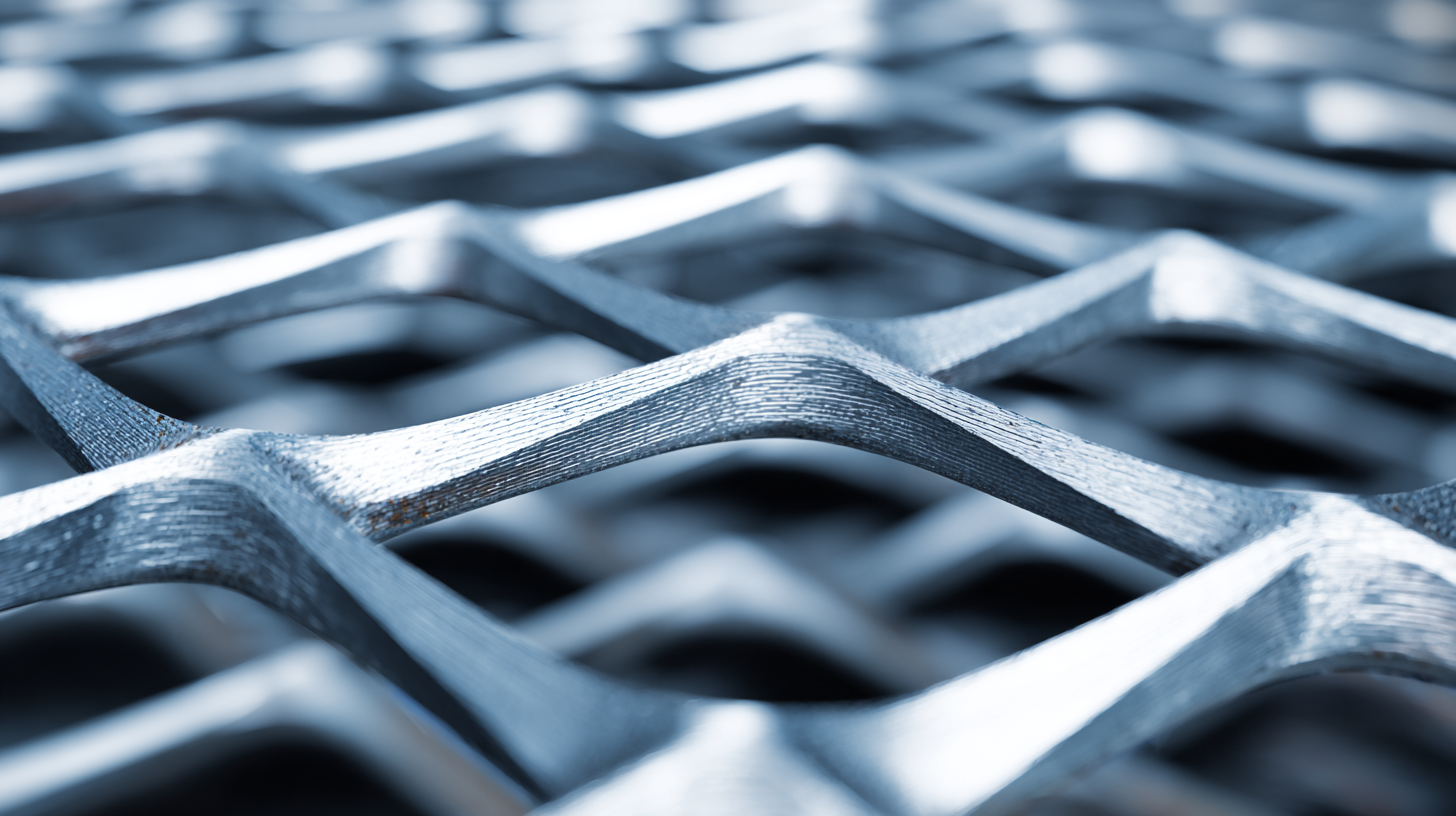The emergence of innovative materials and manufacturing processes has significantly transformed various industries, driving the demand for lightweight yet durable construction components. One such innovation is the I Bar Steel Grating, which has gained traction due to its superior strength-to-weight ratio and versatility across applications. According to a report by the Global Steel Grating Market Analysis, the focus on reducing the I Bar Steel Grating Weight not only enhances structural efficiency but also contributes to overall cost savings in transportation and installation. With a projected growth rate of 4.2% over the next five years, these advancements indicate a pivotal shift toward more sustainable practices in construction.

As manufacturers continue to explore advanced materials and design methodologies, the future of lightweight I Bar Steel Grating promises improvements that will redefine industry standards and client expectations.
The evolution of I-Bar steel grating is increasingly driven by innovative materials that focus on weight reduction while maintaining structural integrity. Recent studies indicate that lightweight materials such as aluminum and advanced composites can reduce the weight of I-Bar grating by as much as 30%, compared to traditional steel options. For instance, a report by the Steel Grating Manufacturers Association (SGMA) highlights that implementing aluminum grating can lead to significant savings in transportation costs and installation time, ultimately enhancing overall project efficiency.
Furthermore, advancements in manufacturing techniques, such as the use of high-strength steels and optimized design methodologies, contribute to producing lighter weight I-Bar steel grating without compromising on load-bearing capacities. According to a 2022 market analysis by Research and Markets, the global market for lightweight steel solutions is expected to grow by 5.7% annually, underscoring the demand for innovative materials that enable industries to reduce weight while achieving higher performance. This trend not only aligns with the increasing focus on sustainability but also addresses the growing needs of sectors ranging from construction to industrial applications for more efficient, eco-friendly solutions.

The ongoing revolution in manufacturing technologies is poised to reshape the landscape of lightweight I-bar steel grating. Innovations such as advanced welding techniques and materials science advancements are instrumental in achieving significant weight reductions while maintaining structural integrity. According to a report published by the International Journal of Steel Structures, the implementation of high-strength, low-alloy steels can yield up to a 20% reduction in weight compared to traditional materials, leading to more efficient designs and lower transportation costs.
Furthermore, the adoption of computer-aided design (CAD) and simulation technologies allows manufacturers to optimize grating configurations, enhancing their lightweight characteristics without sacrificing performance. The Steel Research Institute notes that leveraging simulation tools can reduce material wastage by up to 30%, further supporting sustainability goals in manufacturing. As these emerging technologies become ubiquitous, the future of lightweight I-bar steel grating will not only advance in performance but also contribute significantly to environmental efforts in the construction industry.
| Innovation | Description | Weight Reduction (%) | Technology Used | Application Areas |
|---|---|---|---|---|
| Advanced Alloy Formulations | Utilizing newer alloy compositions for enhanced strength-to-weight ratio. | 15% | Materials Science Innovations | Industrial Flooring, Walkways |
| Modular Design Techniques | Designing grating in modular sections to optimize material use. | 20% | Computer-Aided Design | Construction, Bridges |
| 3D Printing Technology | Using 3D printing to create custom lightweight structures. | 25% | Additive Manufacturing | Design Prototyping, Art Installations |
| Perforation and Cut-Out Strategies | Implementing strategic perforations to reduce weight without compromising strength. | 10% | Engineering Design | Walkways, Access Platforms |
| Reinforced Hybrid Materials | Incorporating composite materials for added strength and reduced weight. | 18% | Composite Engineering | Heavy Industry, Transportation |
The lightweight I-Bar steel grating market is evolving rapidly, driven not only by technological advancements but also by stringent industry standards. These standards are crucial in establishing performance metrics for safety, durability, and weight efficiency. As regulations become more rigorous, manufacturers are compelled to innovate, ensuring their products not only comply but exceed these benchmarks. The emphasis on weight reduction without sacrificing strength presents a unique challenge that many companies are rising to meet.
With the increasing demand for sustainable and efficient construction materials, industry standards are playing a pivotal role in shaping product development strategies. Companies are investing in research and development to create lighter yet robust I-Bar grating solutions that meet these standards. As a result, the market is witnessing the introduction of high-strength materials and advanced fabrication techniques. This trend indicates a future where lightweight I-Bar steel grating not only meets regulatory requirements but also addresses the need for more eco-friendly building practices, ensuring both compliance and innovation go hand in hand.
In comparing traditional versus lightweight I-bar steel grating applications, it's crucial to recognize the significant impact of weight reduction on the efficiency and versatility of these materials. Traditional I-bar steel grating is robust, but its heavier weight can lead to complications in handling, installation, and transportation. On the other hand, lightweight I-bar grating minimizes these issues, which is particularly beneficial in sectors where weight constraints are paramount, such as aerospace and automotive industries.
Tips for choosing between traditional and lightweight I-bar steel gratings include assessing the specific requirements of your project. For applications involving heavy loads, traditional grating might offer better structural support. However, if ease of installation and reducing transportation costs are priorities, lightweight options become an attractive choice. Additionally, consider the environment in which the grating will be used; lightweight materials can often provide added corrosion resistance and longevity.
Ultimately, understanding the specific needs of your application will guide you in determining which type of I-bar steel grating will deliver the best performance and efficiency while keeping in mind the innovative advancements in lightweight materials driving the industry forward.
This chart compares the weight reduction achieved using traditional I-Bar steel grating versus lightweight I-Bar steel grating across various applications. The data illustrates the significant advantages of adopting lightweight materials in construction and infrastructure projects.
As the construction and infrastructure sectors continue evolving, the demand for lightweight materials is growing exponentially. According to a recent market report by MarketsandMarkets, the global demand for lightweight steel grating is projected to grow at a compound annual growth rate (CAGR) of 6.3%, reaching approximately $1.5 billion by 2025. This shift is largely driven by the industry's need to reduce operational costs while improving structural efficiency and safety. Lightweight I-bar steel grating exemplifies this trend, offering reduced weight without compromising durability.

Innovations in manufacturing processes and material technology are key contributors to this projected rise in lightweight steel grating. Advanced techniques such as laser cutting and thermal treatment have enabled manufacturers to optimize design and materials used, resulting in grating that is lighter yet stronger. A report from Grand View Research states that advancements in steel alloys and sustainable production practices will significantly enhance the performance characteristics of these products, making them increasingly appealing in various applications, from industrial sites to commercial establishments. The continued integration of innovation in this sector promises not only to meet market demands but also to support sustainable construction practices globally.